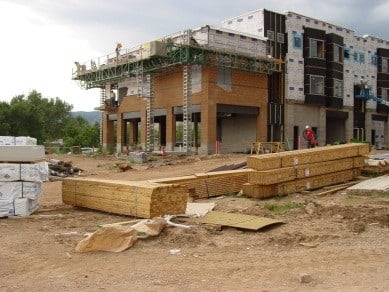Have you ever been asked if a scaffold is OSHA approved? Or perhaps you have been asked if the scaffold is an “OSHA scaffold.” When the question is asked, it has been my experience that the person really is asking if the scaffold in question complies with the applicable OSHA standards. This begs the question: What are the applicable standards?
If a scaffold is constructed of typical scaffold components, used for the support of a temporary elevated platform that supports workers and/or materials, the answer is straightforward. But what happens if non-typical components are used, or if the structure isn’t a scaffold after all? How do you determine what the applicable standards are? How do you convince others of your evaluation. While there are no standard procedures, here are the questions I ask to ascertain the correct application of standards, particularly when scaffold components are used in nontraditional ways.
- What is this structure being used for? This is the basic question that seems so obvious but is often overlooked by safety evaluators. Just because scaffold equipment is involved doesn’t guarantee that the structure is indeed a scaffold. On the other hand, a scaffold can be constructed of virtually any type of material, possibly making the scaffold almost unrecognizable by typical standards.
- The applicable standards are…? Once the structure is identified, the next step is to determine the standards that apply to the situation. If it was decided the structure is a scaffold, then the scaffold standards would obviously apply. If it has been determined that the structure is not a scaffold, then further evaluation is required to determine the applicable standards.
- This structure complies with the applicable standards because…? Here is where the conversation may become lively. Opinions will most certainly vary concerning what the standards mean. Obviously, your opinion is correct and all others are wrong! But how do you convince others of your wisdom?
- Ask the question: “What is the intent of the assumed applicable standard?” Here is where the trouble usually begins. The tendency is to read only the letter of the standard without making the effort of understanding the purpose of the standard. However, only by understanding the hazard that the standard is addressing (the intent) will you be successful in complying with the standards.
- Be honest with yourself. Don’t try to make the standards fit the situation; rather make the situation fit the standards. You don’t have the authority to make up standards or revise OSHA standards to justify your conclusions no matter how good you are.
- Verify compliance. To fully ensure that the structure in question is constructed in compliance with the standards, thoroughly review all applicable standards. If you aren’t satisfied that you have addressed all the hazards, ask for help from a qualified individual. More importantly, if someone else questions the thoroughness, keep an open mind; that person may be more qualified and consequently may be right!
So, how does this really work? Let’s try an example or two. First, suppose we have three planks supported by two oil barrels. There is a stepladder next to one of the barrels so the worker can access the platform. What is this structure? No scaffold frames, tube & clamp, or other standard scaffold products are involved. Is this a scaffold? Yes it is. How do I know this? The OSHA definition for a scaffold is that a scaffold is any temporary elevated platform, and its supporting structure, used to support workers or materials or both. In this case the barrels support plank that support workers. (Please don’t get excited and think I endorse this type of “scaffold.” I use it for illustrative purposes only.) In this example, the scaffold standards apply.
For example two, suppose you observe a trash chute that is thirty feet tall. The chute is constructed of plywood supported by a rectangular structural tower constructed from frame scaffold components. The plywood walls are inside the tower, forming a rectangular chute that is 5 feet wide, 7 feet long, and 30 feet high. What is this structure? Is it a scaffold? Do the scaffold standards apply? I think the scaffold standards do not apply. While the chute is supported by a structure consisting of standard scaffold components, it is not being used to support an elevated temporary platform for workers or materials. Therefore, by definition it is not a scaffold and Subpart L of the OSHA standards does not apply. What standards do apply? The demolition standards, Subpart XXXXXXXXXX probably apply. General safety and health standards apply. The OSHA General Duty Clause, which requires employers to provide a hazard free workplace, probably applies. During the erection of the support tower (note that I did not say scaffold tower) the OSHA fall protection standards, Subpart M, apply. Please remember that while the scaffold standards do not apply, it would be prudent to follow the manufacturer’s recommendations for the construction of the tower.
Scaffold systems are marvelous tools since they can be used in many innovative ways.











